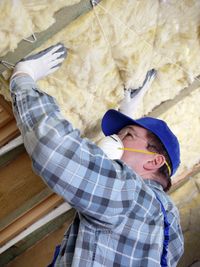
Asbestos is a naturally occurring fibrous mineral that resists sparks, heat, and flame, which is why many building materials contain it. However, since it causes mesothelioma, many manufacturers no longer use it in their products. Because the material has potentially serious health ramifications, it’s important to separate fact from fiction. Here are a few misconceptions about this mineral.
What Are Some Common Myths About Asbestos?
1. Long Term Exposure Is the Only Risk
It may take anywhere from 15 to 50 years for asbestos-related illnesses to show symptoms. Your risk of developing mesothelioma increases the longer you’re exposed. However, although extremely rare, it’s still possible to develop symptoms as a result of short-term exposure.
2. It’s Safe in Small Quantities
Asbestos is friable, which means the mineral fibers break down when disturbed and become airborne. The particles are hook-shaped and attach to the lungs when inhaled. Although less likely than when inhaling large quantities, it’s still possible for a low volume of these particles to cause symptoms.
3. There Are No Alternatives
 There are several safe alternatives that offer the same level of fire and heat resistance. These materials include silica fabrics, polyurethane foam spray, and thermoset plastic flour. Green alternatives include cellulose fiber made from newspaper and flour fillers made from grain hulls and nut shells.
There are several safe alternatives that offer the same level of fire and heat resistance. These materials include silica fabrics, polyurethane foam spray, and thermoset plastic flour. Green alternatives include cellulose fiber made from newspaper and flour fillers made from grain hulls and nut shells.
4. It’s Illegal in the United States
Though asbestos is banned in 55 countries worldwide, it remains legal in the U.S. It was briefly outlawed in the 1980s, but that prohibition was later overturned in court. Some currently-manufactured products, such as gaskets and mechanical parts, contain trace amounts of asbestos.
If you suspect your home may contain asbestos, contact the team at Astech in Bridgeport, CT. They provide asbestos testing, removal, and disposal to residential and commercial clients throughout Fairfield and New Haven counties. Call (203) 335-0502 to schedule a consultation, or visit their website to learn more about how they can keep your indoor air safe.
About the Business
Have a question? Ask the experts!
Send your question

